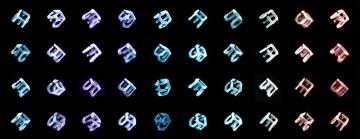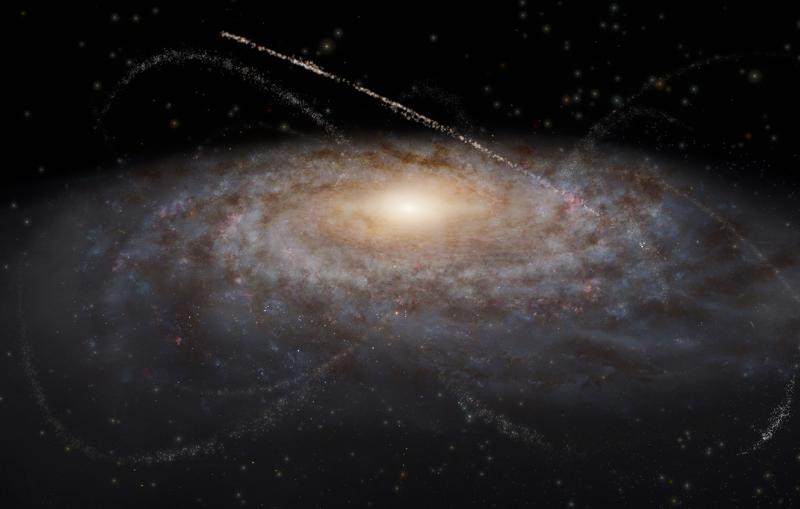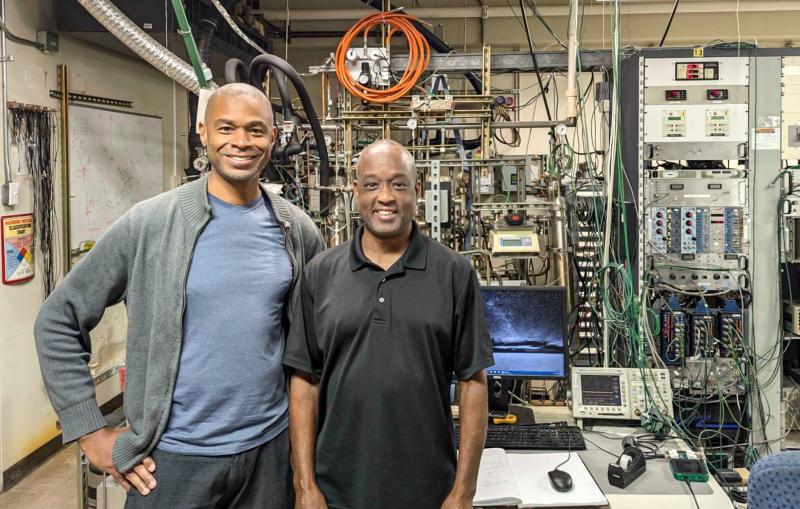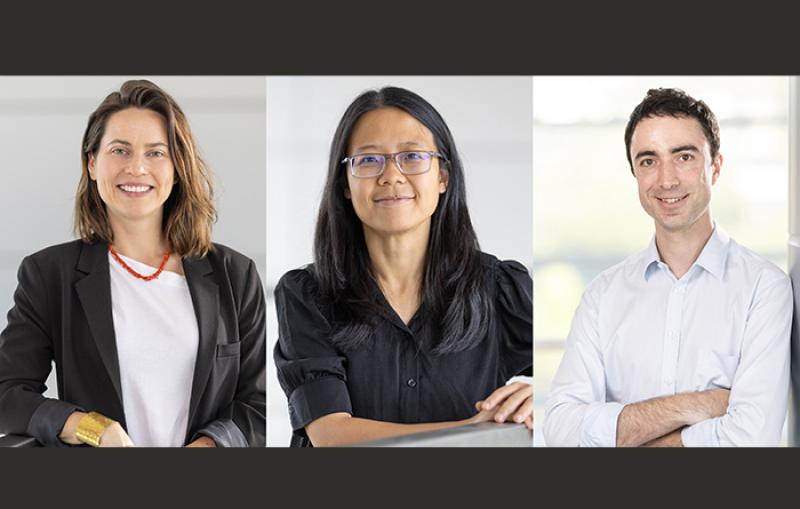How do you take a better image of atom clouds? Mirrors – lots of mirrors
To capture as much information as possible about clouds of atoms at the heart of the MAGIS-100 experiment, SLAC scientists devised a dome of mirrors that gathers more light from more angles.
When it goes online, the MAGIS-100 experiment at the Department of Energy's Fermi National Accelerator Laboratory and its successors will explore the nature of gravitational waves and search for certain kinds of wavelike dark matter. But first, researchers need to figure out something pretty basic: how to get good photographs of the clouds of atoms at the heart of their experiment.
Researchers at the Department of Energy's SLAC National Accelerator Laboratory realized that task would be perhaps the ultimate exercise in ultra-low light photography.
But a SLAC team that included Stanford graduate students Sanha Cheong and Murtaza Safdari, SLAC Professor Ariel Schwartzman, and SLAC scientists Michael Kagan, Sean Gasiorowski, Maxime Vandegar, and Joseph Frish found a simple way to do it: mirrors. By arranging mirrors in a dome-like configuration around an object, they can reflect more light towards the camera and image multiple sides of an object simultaneously.
And, the team reports in the Journal of Instrumentation, there's an additional benefit. Because the camera now gathers views of an object taken from many different angles, the system is an example of “light-field imaging”, which captures not just the intensity of light but also which direction light rays travel. As a result, the mirror system can help researchers build a three-dimensional model of an object, such as an atom cloud.
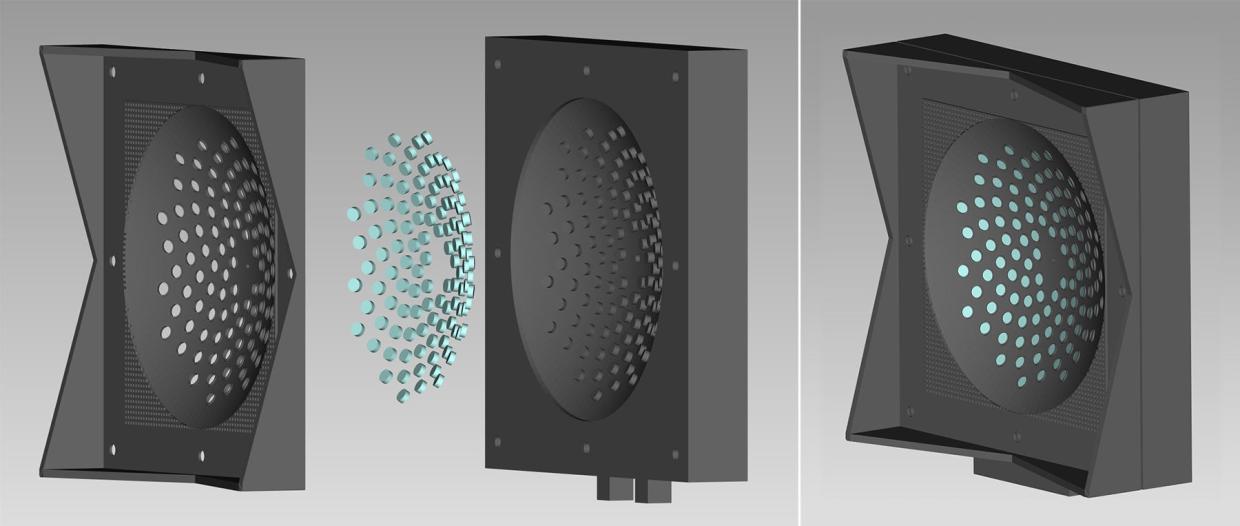
"We're advancing the imaging in experiments like MAGIS-100 to the newest imaging paradigm with this system," Safdari said.
An unusual photographic challenge
The 100-meter-long Matter-wave Atomic Gradiometer Interferometric Sensor, or MAGIS-100, is a new kind of experiment being installed in a vertical shaft at DOE's Fermi National Accelerator Laboratory. Known as an atom interferometer, it will exploit quantum phenomena to detect passing waves of ultralight dark matter and free-falling strontium atoms.
Experimenters will release clouds of strontium atoms in a vacuum tube that runs the length of the shaft, and then shine laser light on the free-falling clouds. Each strontium atom acts like a wave, and the laser light sends each of these atomic waves into a superposition of quantum states, one of which continues on its original path while the other one is kicked much higher up.
When re-combined, the waves create an interference pattern in strontium atom wave, similar to the complex pattern of ripples that emerges after skipping a rock on a pond. This interference pattern is sensitive to anything that changes the relative distance between the pairs of quantum waves or the internal properties of the atoms, which might be influenced by the presence of dark matter.
To see the interference patterns, researchers will literally take pictures of a cloud of strontium atoms, which comes with a number of challenges. The strontium clouds themselves are small, only about a millimeter across, and the details that researchers need to see are about a tenth of a millimeter across. The camera itself must sit outside a chamber and peer through a window across a relatively long distance to see the strontium clouds within.
But the real problem is light. To illuminate the strontium clouds, experimenters will shine lasers on the clouds. However, if the laser light is too intense, it can destroy the details scientists want to see. If it's not intense enough, light from the clouds will be too dim for the cameras to see.
"You're only going to collect as much light as falls on the lens,” said Safdari, “which is not a lot."
Mirrors to the rescue
One idea is to use a wide aperture, or opening, to let more light into the camera, but there's a tradeoff: A wide aperture creates what photographers call a narrow depth of field, where only a narrow slice of the picture is in focus.
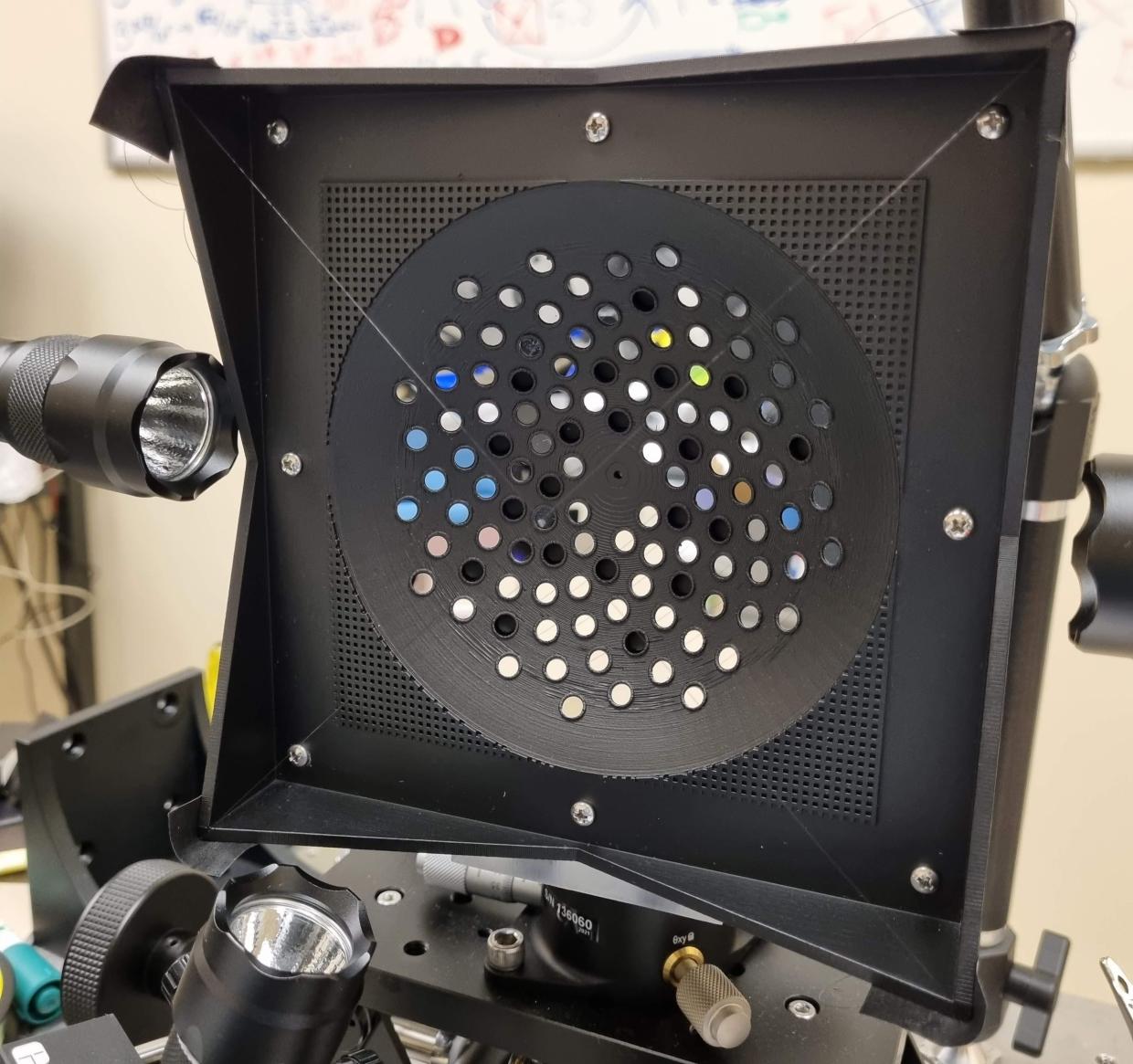
Another possibility would be to position more cameras around a cloud of strontium atoms. This could gather more of the reemitted light, but it would require more windows or, alternatively, fitting the cameras inside the chamber, and there isn’t much space in there for a bunch of cameras.
The solution popped up, Schwartzman said, during a brainstorming session in the lab. As they were bouncing ideas around, staff scientist Joe Frisch came up with the idea of mirrors.
"What you can do is reflect the light travelling away from the cloud back into the camera lens," said Cheong. As a result, a camera can gather not just much more light but also more views of an object from different angles, each of which shows up on the raw photograph as a distinct spot on a black background. That collection of distinct images, the team realized, meant they had devised a form of so-called ‘light-field imaging’ and might be able to reconstruct a three-dimensional model of the atom cloud, not just a two-dimensional image.
3D printing an idea
With support from a Laboratory Directed Research and Development grant, Cheong and Safdari took the mirror idea and ran with it, designing an array of tiny mirrors that could redirect light from all around an atom cloud back toward a camera. Using some algebra and ray-tracing software developed by Kagan and Vandegar, the team calculated just the right positions and angles that would allow the mirror to keep many different images of the cloud in focus on the camera. The team also developed computer vision and artificial intelligence algorithms to use the 2D images to perform 3D reconstruction.
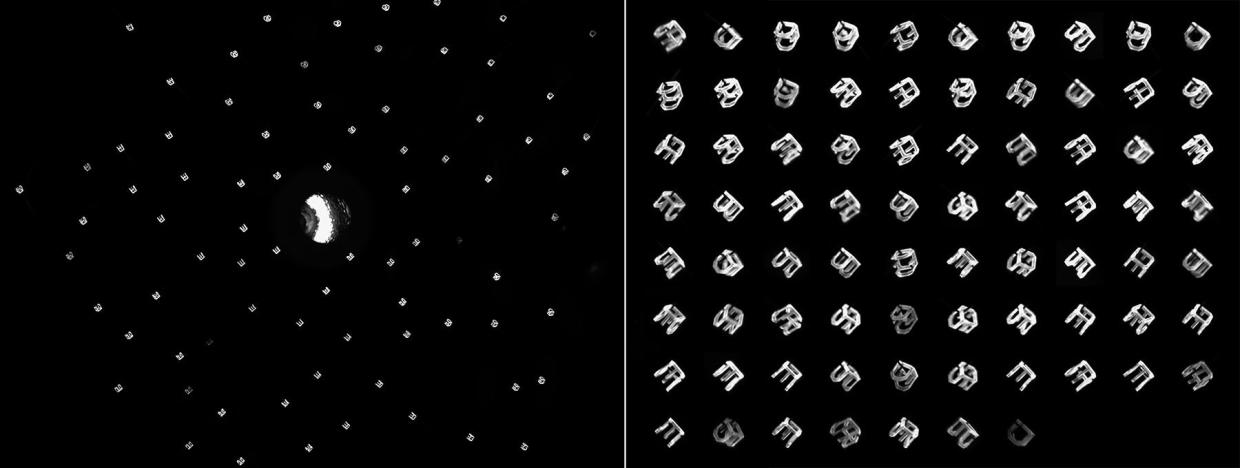
It’s the sort of thing that might seem obvious in retrospect, but it took a lot of thought to achieve, said Schwartzman. "When we first came up with this, we thought, 'People must have done this before,’" he said, but in fact it's novel enough that the group have applied for a patent on the device.
To test out the idea, Cheong and Safdari made a mock-up with a 3D printed scaffold holding the mirrors, then fabricated a micro-3D printed fluorescent object that spells out "DOE" when viewed from different angles. They took a picture of the object with their mirror dome and showed that they could, in fact, gather light from a number of different angles and keep all of the images in focus. What's more, their 3D reconstruction was so accurate that it revealed a small flaw in the fabrication of the "DOE" object – an arm of the "E" that was bent slightly downward.
The next step, the researchers said, is to build a new version to test the idea in a smaller atom interferometer at Stanford, which would produce the first 3D images of atom clouds. That version of the mirror dome would sit outside the chamber containing the atom cloud, so if those tests are successful the team would then build a stainless-steel version of the mirror scaffold suitable for the vacuum conditions inside an atom interferometer.
Schwartzman said the ideas Cheong, Safdari and the rest of the team developed could be useful beyond physics experiments. "It's a novel device. Our application is atom interferometry, but it may be useful in other applications," he said, such as quality control for small-object fabrication in industry.
The research was supported by the Department of Energy, Laboratory Directed Research and Development Program. MAGIS-100 is supported by the Gordon and Betty Moore Foundation and the DOE Office of Science.
Citation: Sanha Cheong et al., Journal of Instrumentation, 18 August 2022 (10.1088/1748-0221/17/08/P08021)
For questions or comments, contact the SLAC Office of Communications at communications@slac.stanford.edu.
SLAC is a vibrant multiprogram laboratory that explores how the universe works at the biggest, smallest and fastest scales and invents powerful tools used by scientists around the globe. With research spanning particle physics, astrophysics and cosmology, materials, chemistry, bio- and energy sciences and scientific computing, we help solve real-world problems and advance the interests of the nation.
SLAC is operated by Stanford University for the U.S. Department of Energy’s Office of Science. The Office of Science is the single largest supporter of basic research in the physical sciences in the United States and is working to address some of the most pressing challenges of our time.
